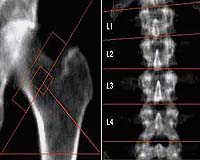 Under Minnesota law, an injured workers’ immigration status is irrelevant to a determination of whether that employee is entitled to workers’ compensation benefits. What this means is that undocumented workers are entitled to the same workers’ compensation benefits as documented workers, including wage loss benefits, medical benefits and rehabilitation benefits.
Under Minnesota law, an injured workers’ immigration status is irrelevant to a determination of whether that employee is entitled to workers’ compensation benefits. What this means is that undocumented workers are entitled to the same workers’ compensation benefits as documented workers, including wage loss benefits, medical benefits and rehabilitation benefits.Unfortunately, undocumented workers are frequently unaware of their rights under Minnesota workers’ compensation law, and employers of injured undocumented workers regularly tell the workers that they have no rights. In our practice, we also frequently see undocumented workers facing retaliation and intimidation by employers after reporting an injury.
Minnesota Workers’ Compensation Advisory Council and Department of Labor and Industry Commissioner Steve Sviggum have been working throughout 2008 to review the Work Comp system and propose changes to the Minnesota legislature.
One of those proposed changes would strip workers’ compensation benefits from injured undocumented workers. Commissioner Sviggum explained the rationale as follows:
Let me be as bold to say, illegal aliens should not be awarded full workers’ compensation benefits. Such policy discriminates unfairly in favor of the undocumented worker, unjustly requiring the employer to pay more than he or she should to, essentially, reward that person for the illegal work activity.This proposed change is drastic and the rationale behind it is questionable, at best.
When an illegal alien enters into the system, however, the principal objective of workers’ compensation is lost and only the illegal alien benefits from workers’ compensation programs. When applied to cases involving illegal aliens, the way in which workers’ compensation statutes determine an injured employee’s capacity to return to work is fundamentally flawed to privilege the undocumented worker.
Compared to American or documented workers, of whom 75 percent return to work in less than a month following the injury, the legal reemployment rate for undocumented workers is zero percent, an unambiguous and costly discrepancy.
First, the notion that employers somehow pay more for compensation benefits for undocumented workers is fundamentally flawed. By hiring undocumented workers, employers frequently pay minimal wages and benefits to these individuals. If that undocumented worker is injured on the job, the employer’s insurance company is required to pay the exact same benefits to that injured worker as they would be required to pay legal workers. No more, no less.
Commissioner Sviggum suggests that undocumented workers cost employers and insurers more because they cannot be legally re-employed, thus extending the time they receive wage loss benefits. First, the fact that the undocumented worker was employed by the employer in the first place refutes the idea that undocumented workers can’t go back to work. To avoid paying long-term wage loss benefits, the employer can simply return the injured worker to his or her original job. Secondly, Commissioner Sviggum is correct in noting that undocumented workers cannot legally be re-employed. However, our experience suggests that undocumented workers really don’t have that much difficulty finding employment because employers are more than willing to hire people with questionable immigration status. While illegal immigration is a problem, prohibiting an injured undocumented worker from receiving workers’ compensation benefits does nothing to actually address the problem.
In fact, eliminating benefits for undocumented workers would actually exacerbate the problem by encouraging employers to hire undocumented workers. It would allow employers to hire undocumented workers, pay them minimal wages, have them work in dangerous conditions, and face absolutely no consequence through the workers’ compensation system if that employee is injured.
Without workers compensation benefits, an undocumented injured worker may be forced to resort to relying on other assistance programs, such as medical assistance, general assistance, and food stamps, substantially increasing the burden on taxpayers.
Moreover, the whole concept behind the workers’ compensation system is to require employers to bear the burden for injuries that occur on the job, and in exchange, employees give up the right to sue their employers. Eliminating workers’ compensation benefits for undocumented workers may actually have the unintended consequence of increasing liability costs for employers. If no workers’ compensation benefits are available to an injured undocumented worker, that worker may have the right to sue their employer for their injuries. As a rule, in any given case, the potential civil liability exposure would be much greater than any potential workers’ compensation exposure. Under Minnesota Workers’ Compensation, benefits include medical benefits, rehabilitation benefits, limited wage loss benefits, and limited permanency benefits. A civil case against an employer may include pain and suffering, greater wage loss benefits, and punitive damages, in addition to the benefits available under workers’ compensation.
If Commissioner Sviggum wants to curb illegal immigration, the workers’ compensation system is the wrong place to start. His proposed changes would have no effect on illegal immigration, and would most likely encourage employers to hire more undocumented workers. Let’s hope that this proposal does not get past the Minnesota legislature. If you are an injured worker and need assistance obtaining workers’ compensation benefits, call us at 877-746-5680 or click here to send us an email to schedule a free consultation with one of our workers' compensation lawyers.
Visit our workers' compensation website at MeuserLaw.com!






























